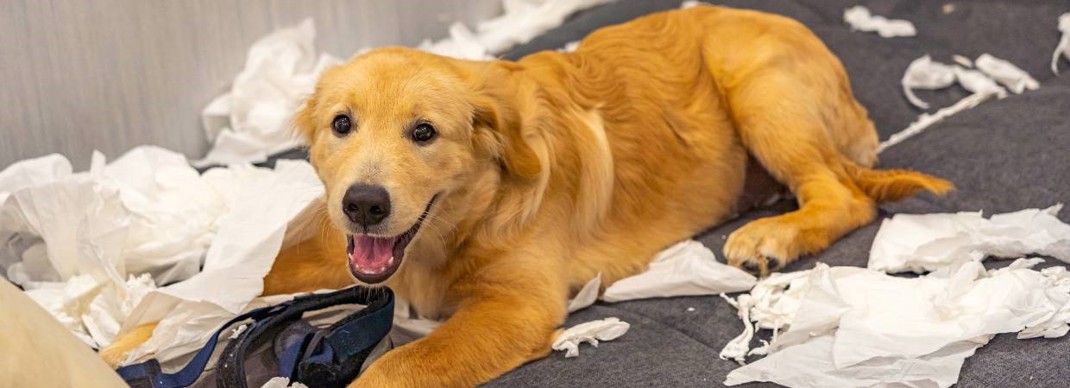Separation Anxiety in Dogs

For most dogs, being alone at home offers a good chance to lie around, nap and dream in peace, but some become anxious and, in extreme cases, do considerable damage to the house. Simon Goodall has some simple but effective suggestions to help combat this problem.
You may want to bring your dog inside for the wetter months, particularly if you’re out all day, but you may be a little worried about the damage it could do when left alone. In this column, we look at how to alleviate your dog’s fears of being left behind – and the resulting bad behaviour.
The first thing is to work out whether your dog has separation anxiety.
If you have managed to leave your dog at home alone in the past without damage, it is unlikely that this will be an issue. However, a change in circumstances such as a new job and new hours or a change of location can lead to separation anxiety.
Dogs with separation anxiety may dig, bark, damage property or just sit by the door all day and not move. As dog owners we often think that separation anxiety is just when a dog barks, but we have seen everything from chewed walls to holes that give the dog a good chance of getting out. Separation anxiety can be difficult on the dog and family, as everyone feels helpless.
When you leave your house, the dog has no idea that you are coming back. Many dogs don’t care too much and just lie about. However, some dogs are so attached that they just can’t cope.
So, we need to remove the attachment to you and change it to an object.
One way to do this is to have a bed that you constantly move around the house. Encourage the dog to lie on the bed in the evenings, while you are cooking dinner or even when you’re watching television. Over time the dog starts to realise that if they have their bed, then everything is fine. It then becomes attached to the bed rather than you.
You could also try a fillable dog toy, that you pop some of your clothes in to provide a comforting smell for your pet while you’re away.
In addition to this, you may also want to change your schedule. You can still leave the house at the same time, but juggle your normal activities up a bit. Sometimes have a shower first, sometimes have your morning cuppa first. Perhaps give them breakfast when you get up on some days, and at other times feed them just before you go.
Dogs are very sensitive and pick up on the tiniest cues, for example, your habit of making a cuppa or buttering your toast just before you leave the house.
So how do you know if your dog has separation anxiety?
Here is a checklist of indicative behaviours:
- Barking complaints from neighbours and/or animal control
- Digging around the boundary fence
- Constant escaping, no matter how hard you try to stop them
- Damage that is not minor, usually right beside the point where you went out, for example, chewed doors, beds torn apart
- Excessive urination or defecation by the front door
Behaviours that don’t indicate separation anxiety - sometimes the problem is simply boredom:
- Digging holes in the centre of the garden
- Damaging toys
- Peeing on the bed
- Being super-excited when you come home
- Barking when you leave but settling down within five minutes


